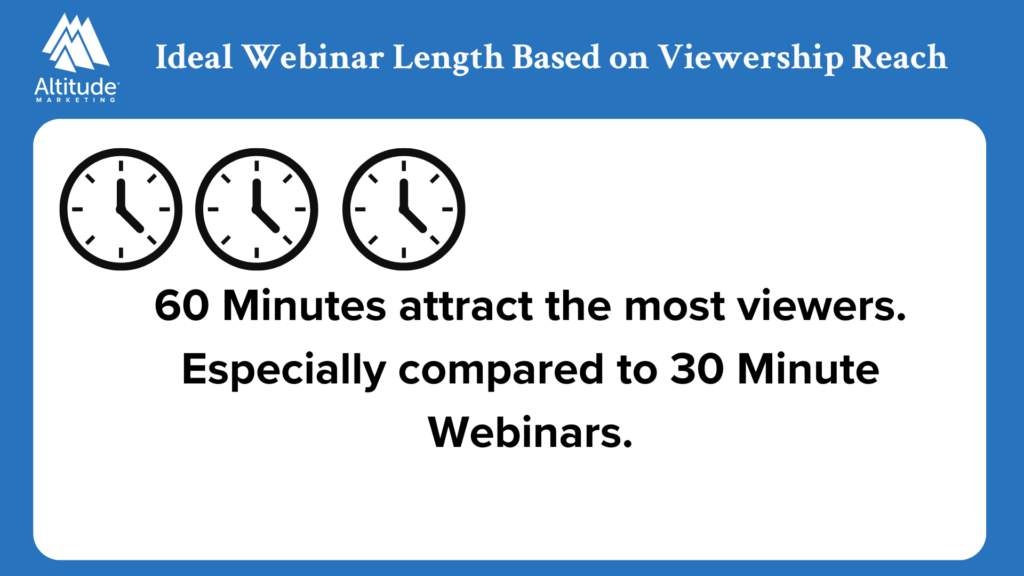As businesses strive to deliver compelling content and meaningful engagement, they are continuously exploring new avenues to connect with their target audience. That’s why webinars are increasingly popular B2B tools to drive top and middle-of-funnel leads. The format allows businesses to display their expertise and build thought leadership while engaging with target customers in a more interactive manner.
These online seminars offer a versatile and engaging medium for disseminating valuable insights, facilitating interactive discussions, and nurturing relationships with both prospects and existing clients.
In this blog, we will delve into the features and strategies that make webinars both engaging for your audience, and a useful conversion tool for your business.

Host a Successful Webinar in 7 Steps
Step 1: Define Your Goals
Before diving into the planning and execution of a webinar, it’s crucial to define clear objectives that align with your overall marketing strategy and business goals. Here’s a closer look at how to define objectives effectively:
Identifying Specific Goals:
- Lead Generation: One of the primary objectives of hosting a webinar may be to generate leads for your business. By offering valuable content and insights, webinars can attract prospects who are genuinely interested in your products or services, allowing you to capture their contact information through registration forms.
- Product Education: Webinars are an excellent medium for educating prospects and customers about your products or services. Whether showcasing new features, providing in-depth demos, or addressing common pain points, webinars can help increase product understanding and adoption among your target audience.
- Industry Thought Leadership: Positioning your company as a thought leader within your industry is another key objective of hosting webinars. By sharing valuable insights, best practices, and industry trends, you can establish credibility, trust, and authority among your target audience, ultimately driving brand recognition and customer loyalty.
Objective | Metrics to Consider |
Lead Generation |
|
Product Education |
|
Industry Thought Leadership |
|
Step 2: Align Objectives with Overall Marketing Strategy
It’s essential to ensure that your webinar objectives align with your overall marketing strategy and business goals. Consider how hosting webinars fits into your broader marketing initiatives and how it contribute to achieving your desired outcomes.
For example, if your overarching marketing goal is to increase market share in a specific industry vertical, your webinar objectives may focus on thought leadership and establishing your company as a leading provider of solutions within that vertical.
By identifying specific goals and setting measurable metrics to track success, you can ensure that your webinar campaigns align with your overall marketing strategy and drive tangible results for your business.
Step 3: Research Trending Topics Within the Industry
Stay informed about the latest trends, developments, and hot topics within your industry. Monitor industry publications, news sources, social media platforms, and online forums to identify relevant and trending topics that are generating buzz and discussion among professionals.
Consider conducting keyword research using tools like Google Trends, SEMrush, or BuzzSumo to identify popular topics and keywords related to your industry. Analyze search volume, trend data, and competitive analysis to uncover potential webinar topics that are in high demand among your target audience.
Understand your target audience’s demographics, interests, challenges, and pain points. Conduct market research, surveys, and interviews to gain insights into the topics that resonate most with your audience and address their specific needs and concerns.
Consider leveraging buyer personas to create detailed profiles of your ideal audience segments. Use these personas to identify common pain points, questions, and interests that can serve as the basis for selecting relevant and compelling webinar topics.
Step 4: Ensure the Chosen Topic Provides Value and Actionable Insights for Webinar Attendees
Choose a topic that provides tangible value and actionable insights for attendees. Your webinar should offer practical tips, strategies, and solutions that help address attendees’ challenges, solve problems, or achieve their goals.
Stay flexible and agile in your topic selection process to adapt to changing market dynamics, emerging trends, and shifting audience preferences. Monitor industry developments and be prepared to pivot your webinar topics accordingly to maintain relevance and effectiveness.
Focus on delivering educational and informative content that empowers attendees with new knowledge, skills, or perspectives. Avoid overly promotional or sales-focused topics that may turn off attendees and diminish the perceived value of your webinar.
Step 5: Analyze Past Performance and Feedback
Review past webinar performance and attendee feedback to identify topics that have resonated well with your audience in the past. Analyze metrics such as attendance rates, engagement levels, and post-webinar survey responses to identify patterns and trends.
Use attendee feedback and comments to understand what topics they found most valuable and engaging. Incorporate this feedback into your topic selection process to ensure you’re addressing the needs and interests of your audience effectively.
Step 6: Tips to Prep and Host
1. Conduct Rehearsals with Speakers and Presenters
Schedule rehearsals with all speakers and presenters to ensure they are familiar with the webinar format, content, and timing. Practice transitions between speakers, slides, and interactive elements to ensure a smooth delivery.
Use rehearsal sessions to address any technical issues, fine-tune presentations, and clarify roles and responsibilities among speakers. Encourage open communication and collaboration to ensure everyone is aligned and prepared for the live event.
2. Test Technical Equipment
Test out devices at least 1 hour before the webinar. This will ensure smooth technical operations during the live event. Before the webinar, run thorough tests of all technical equipment, including audio, video, and screen-sharing capabilities, to identify and address any potential issues.
Designate a technical support team or individual to troubleshoot technical problems in real time during the webinar and provide assistance to both speakers and attendees as needed. By prioritizing technical preparedness and support, you can minimize disruptions and ensure a seamless experience for all participants, enhancing the overall success of the webinar.
3. Engage Attendees Throughout the Webinar
Incorporate interactive features such as polls, Q&A sessions, and live chat throughout the webinar to engage attendees and encourage participation. Use polls to gather feedback, initiate discussions, and gauge audience opinions on relevant topics.
Allocate dedicated time for Q&A sessions, where attendees can ask questions and interact with speakers in real-time. Monitor the chat and respond to attendee inquiries promptly to foster a sense of engagement and interactivity.
Step 7: Follow-Up:
1. Send Thank-You Emails to Attendees and Registrants:
Send personalized thank-you emails to all webinar attendees and registrants, expressing appreciation for their participation and engagement. Include a summary of key takeaways, links to resources mentioned during the webinar, and any additional information or follow-up actions.
Use thank-you emails as an opportunity to nurture leads and continue the conversation with attendees. Invite them to connect on social media, subscribe to your newsletter, or explore additional content on your website. In addition, conduct surveys for possible improvements of future webinars.
2. Repurpose Content
After hosting a webinar, it’s essential to leverage the valuable content generated during the event by repurposing it into various formats to extend its reach and longevity. This can include transforming webinar content into blog posts, articles, infographics, podcasts, social media snippets, and other formats that cater to different audience preferences and consumption habits.
Compared to standard seminars, recording webinars and transforming them to other formats is easier to do. On-demand webinars can ensure that businesses can still access video after the event ensuring possible new leads after the event.
By breaking down key insights, quotes, and takeaways from the webinar into digestible formats, the content becomes more shareable and accessible across different channels, maximizing engagement and visibility.
Additionally, recorded webinar sessions should be shared with leads who couldn’t attend the live event, as well as with new prospects and customers who may benefit from the content.
Webinar FAQs
What is a webinar?
A webinar is a live, online seminar or presentation that allows participants to interact with presenters, ask questions, and engage in discussions from any location with internet access.
Why are webinars important for B2B marketing?
Webinars offer a dynamic and interactive platform for delivering valuable content, fostering meaningful interactions, and building relationships with prospects and customers. They are effective tools for lead generation, brand awareness, thought leadership, and audience engagement in the B2B space.
What are some key benefits of using webinars for B2B marketing?
Some key benefits of using webinars for B2B marketing include generating leads, increasing brand awareness, establishing thought leadership, engaging prospects and customers, and repurposing content for extended reach and longevity.
Conclusion
As the importance of virtual communication continues to grow, webinars will remain a cornerstone of B2B marketing efforts, providing opportunities for meaningful engagement, lead generation, and business growth. By embracing webinars as a key component of their marketing strategy, B2B organizations can position themselves for success and drive tangible results in today’s competitive marketplace.





